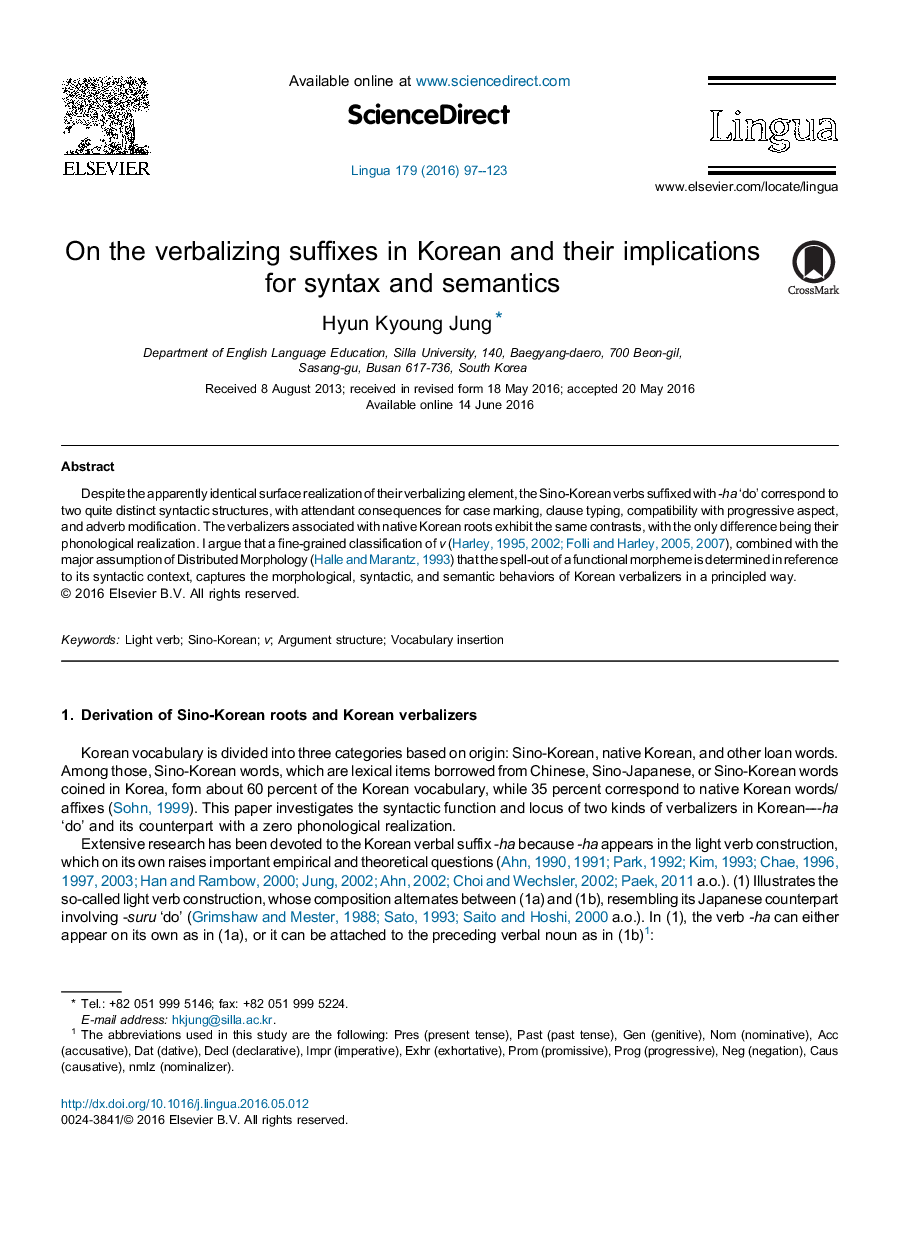| Article ID | Journal | Published Year | Pages | File Type |
|---|---|---|---|---|
| 935224 | Lingua | 2016 | 27 Pages |
•A v flavor analysis captures Case licensing patterns of the Korean verbalizers -ha/∅.•Consequences for clause typing, progressivization, and modification are discussed.•The spell-out of little v is determined in reference to whether it appears adjacent to a root or not.
Despite the apparently identical surface realization of their verbalizing element, the Sino-Korean verbs suffixed with -ha ‘do’ correspond to two quite distinct syntactic structures, with attendant consequences for case marking, clause typing, compatibility with progressive aspect, and adverb modification. The verbalizers associated with native Korean roots exhibit the same contrasts, with the only difference being their phonological realization. I argue that a fine-grained classification of v ( Harley, 1995, Harley, 2002, Folli and Harley, 2005 and Folli and Harley, 2007), combined with the major assumption of Distributed Morphology (Halle and Marantz, 1993) that the spell-out of a functional morpheme is determined in reference to its syntactic context, captures the morphological, syntactic, and semantic behaviors of Korean verbalizers in a principled way.
